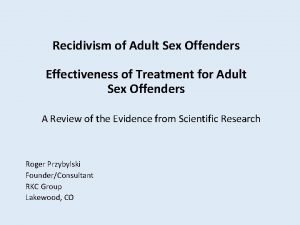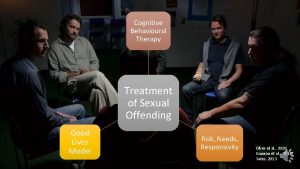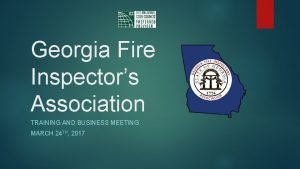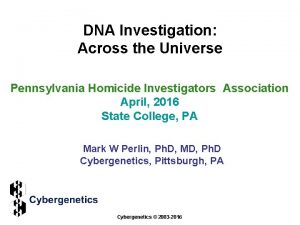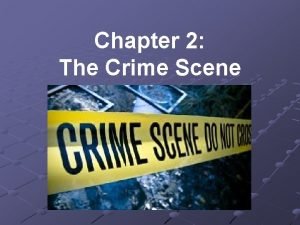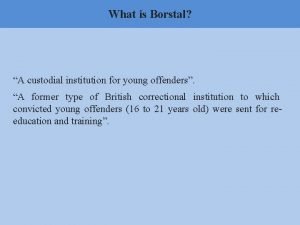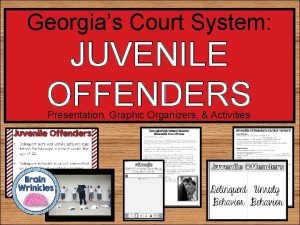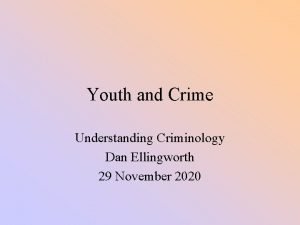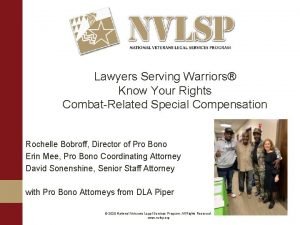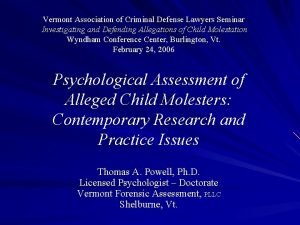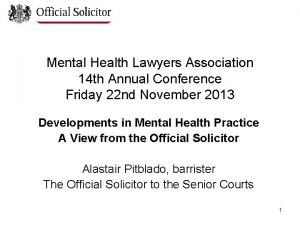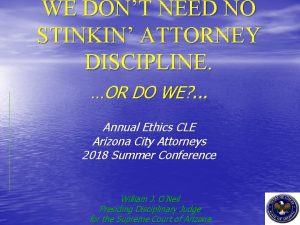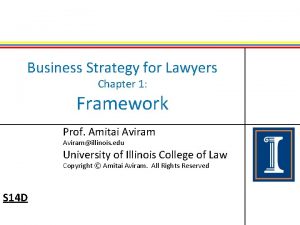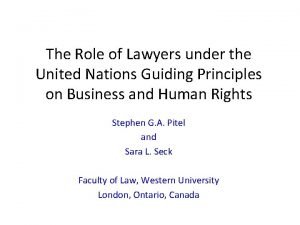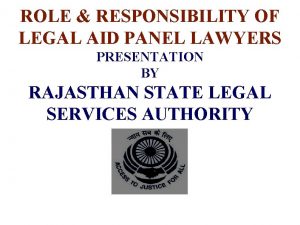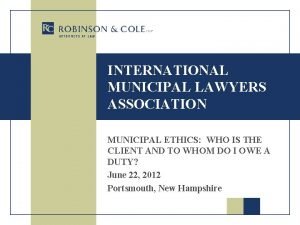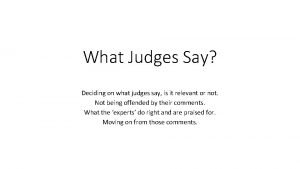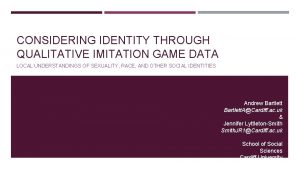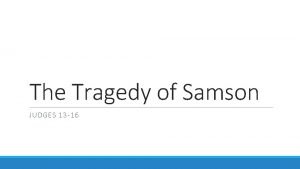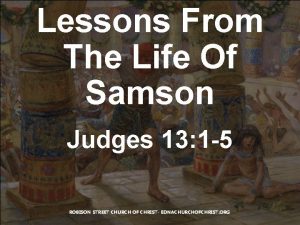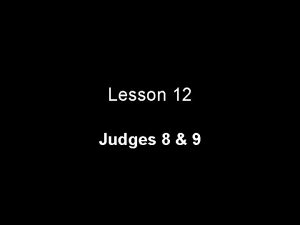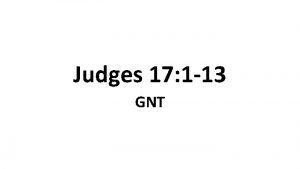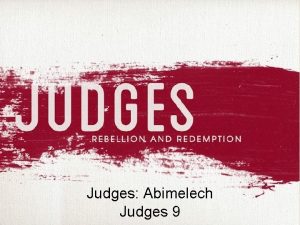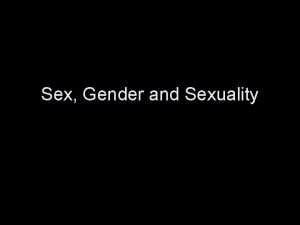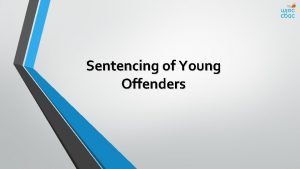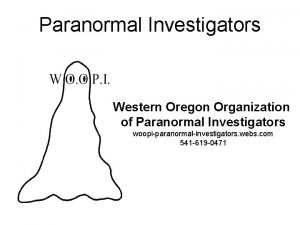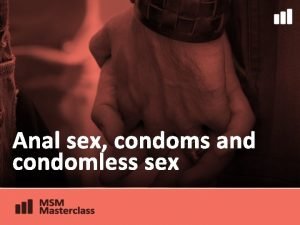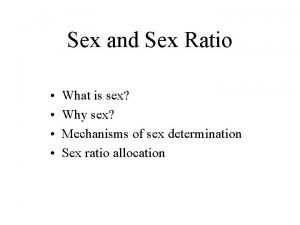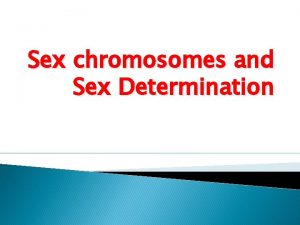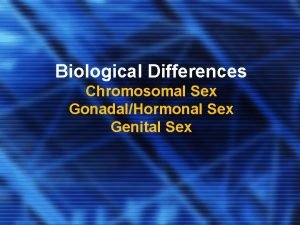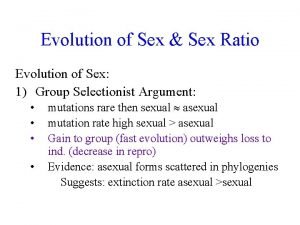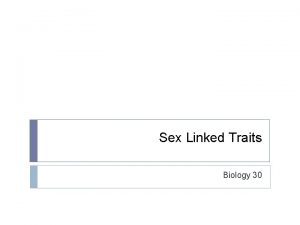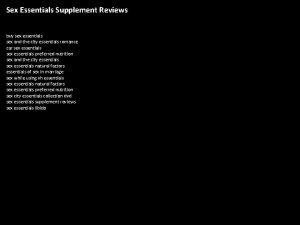Sex Offenders What Judges Lawyers Investigators and Child
































































- Slides: 64

Sex Offenders: What Judges, Lawyers, Investigators and Child Advocates Should Know Cory Jewell Jensen, M. S. Coryjjensen@gmail. com CBI Consulting, Inc. 1

Workshop Topics n This session: What Judges, et al. l l l n Research findings about sex offenders professionals should know The etiology of sexual deviancy/pedophilia Incident, reporting and detection rates “Cross over” or “crime switching behavior among sex offenders Recidivism vs. re-offense rates and treatment effect Next session: Selection, Engagement and Seduction of Children and Adults (Grooming) l Various phases of grooming with offender quotes and footage. 2

“You Shall Know the Truth and the Truth Shall Make You Flinch. ” w Training originally designed for LEA w If you have a history of abuse, talk to someone. w Disturbing but important information that could help us protect children and raise fewer offenders. w May challenge your beliefs. w Broad base of information that is relevant to your job. w Video clips and quotes/client confidentiality. w Some old, older and new! 3

Percentage of population you have to worry about: 4

Selection, Engagement and Seduction of Children and Adult by Child Molesters, (Jewell Jensen, Jensen & Bailey, 2002 w Why does grooming work? n Most adult don’t know what to look for. n Most adults don’t want to see it or believe it. w How does grooming work? n By targeting specific children, families and communities to exploit. n Seducing the child/ren and adults. n Preparing for disclosure/confrontation n Learning from experience. 5

6

PROTECTING YOUR CHILDREN: “Advice From Child Molesters” w 1989 Sex Offender Group w Westridge Elementary School and LO PD w Washington County Sheriff’s Office w Oregon State & USA “No one wants to have to tell their children about sexual abuse. On the other hand, do you want them to learn about it from a child molester instead? ” 7

Protecting Our Children 2001 -2017 w w w w Oregon Counties: 26/31 Washington, Clackamas Columbia, Klamath-Lake Coos, Douglas, Wallowa, Umatilla, Morrow, Curry Clatsop, Lincoln, Polk, Linn, Gilliam, Wheeler, Harney Hood River, Jackson, Jefferson Lane, Marion, Sherman, Wasco, Yamhill & Malhuer w w w w Alaska Washington Idaho Montana Nebraska Wyoming California New York West Virginia Iowa Kansas Maryland Kentucky Mississippi 8

Polygraph Testing Leads to Better Understanding of Adult and Juvenile Sex Offenders (Hindman, J. & Peters, J. , 2001) Adult Offenders Pre-polygraph Post-polygraph Ave. # of Victims 2. 9 11. 6 Sexually Abused As Child 61% 30% Sexually Abusing As Child 27% 76% 9

A Prospective Examination of Whether Childhood Sexual Abuse Predicts Subsequent Sexual Offending (Widom & Massey, 2015) w Only 11. 6% of male childhood sex abuse victims were arrested for later sexual offending. w If victims go on to offend, it usually occurs at an earlier age. w “Individuals with histories of physical abuse and neglect were at significantly increased risk for arrest for sexual offenses whereas for sexual abuse, the significance did not reach significance. ” 10

Disclosure Rates and Reporting w w w 1 in every 5 girls, 1 in every 10 boys. (National Crime Victims Survey, 2012) Only 5% to 13% of children tell anyone they are being abused while it is occurring (London, 2005). The majority of victims delay reporting for years. 52% of offenders reported that children had told, people had discovered, but no one contacted authorities. (CBI, 1992 & 2011). 8% of adults reported that, during the previous year, they knew someone was probably abusing a child. Only 65% intervened, 22% said they did nothing (Amick, 2009). 11

Department of Education Study United Kingdom, 2016 w Interviewed 2, 504 adults w One third said they have suspected child abuse and failed to report it. w 36%-37% of those who failed said reporting would be “more challenging that delivering news about the death of a friend or family member or reporting a crime committed by a family member. w Fear about possibly “misreading” the situation or “wrongly accusing the person were deterrents to reporting. 12

Failure to Disclose and Delayed Disclosure w Delays increase with age of victim, closer relationship to offender, belief that harm “will come to others, ” and feelings of responsibility/compliance (Goodman-Brown, et al, 2003). w Delays increased by grooming and instrusiveness of abuse (Hershkowitz, 2006) n Victim resistance (44%), passive (51%) or compliant/cooperative (62%) n Exposure (36%), fondling (55%), penetration (68%). 13

Things to Consider: Victims Offenders w Child victims may not know/understand what is happening w May love/feel protective of offender w Been conditioning by grooming n n Threats/fear Feel responsible/seduced w May not know what/how to tell w Feel embarrassed/ ashamed and avoid talking about it w May know that if they tell, people will be upset and someone will go to jail w Been doing this most of their lives, have distorted attitude about what they are doing. w Part of the excitement for offenders is the secrecy/sneakiness w If the abuse is discovered people will be angry/hurt w Offender could go to jail w Lose job/housing w Feel ashamed/guilty w Public humiliation 14

“False” Allegations versus “Mistakes” w w w w Do children lie? The “pee” story. The “coat in the hall closet” story. The “Michael Jackson” story. “Unfounded” versus “False” Divorce/custody cases. 2 to 12% depending on age. Fewer than 4% of cases have physical evidence. 15

Scientifically Rigorous Studies w Victoria Police, Australia n n n 2003 850 cases 2. 1% classified as false. w Toronto Metropolitan Police n n n 1977 116 cases 6% classified as false. w Making a Difference” study n n n Date unknown 2, 059 cases 7% classified as false. w British Home Office n 2005 n 2, 643 n 2. 5% classified as false w British Home Office, n 1992 n 348 cases n 8. 3% classified as false 16

Offender Typologies w 65% adult offenders n n n n Rape III Child molesters Pedophiles (30%) Exposers/peepers Rapists Child pornography offenders Sexual sadists w 35% juvenile offenders n n Some juveniles who are becoming sexually deviant persistent offenders Others who have offended out of curiosity/immaturity 17

Children and Problematic Sexual Behavior w Experts estimate that 1 in 10 children engage in inappropriate sexual behavior with other children. w 35% to 40% of all sexual crimes against children are committed by juveniles. w 40% of “acquaintance rapes” are committed by juveniles w Adult offenders report that the average of their first criminal sex offense was between 12 and 14. 18

Sexual Assault of Young Children as Reported to Law Enforcement: Victim, Incident and Offender Characteristics (Snyder, 2000) w 40% of the offenders of children under 6 were other children. n n 13% of offenders were age 7 to 11 27% were age 12 to 17. w 39% of offenders of children age 6 to 11 were juveniles. w 27% of juvenile victims (11 yrs+) were abused by juvenile offenders. 19

Offender Views of the Beginning w “As a small child, I had a 4 -year-old sexual friend with w w whom I enjoyed many childhood sexual experiences. Our friendship lasted four or five years and my victims reminded me of my childhood friend. “ “As a kid, I developed a sexual draw to young girls that stayed with me as I grew older. ” “I got better and better at finding victims. ” “After I was abused, I became really sexual and it didn’t take much to trigger my desires, it was both pleasurable and fun. ” “Once it got started, it snowballed and became commonplace in my life. ” 20

Are cognitive distortions associated with denial and minimization among sex offenders? (Nunes & Jung, 2012) “ Sexual crimes are acts of secrecy, and denial is a place where offenders often seek psychological refuge. ” 21

Mean Accuracy Scores (Telling Lies) Eckman. 1969 -2008 Mean accurate – lies Mean accurate – truth Federal officers “CIA” 80. 0 66. 1 Sherriff’s “best” 77. 7 55. 8 Forensic psychologists 71. 0 63. 9 Clinical psychologists 64. 3 59. 8 Federal Judges 60. 9 63. 1 Academic psychologists 57. 0 58. 4 Mixed LEA 53. 9 47. 8 22

Common Characteristics of Child Molesters w Deviant sexual arousal w Pro-offending attitudes n n n Pedophilic Hebephilic Voyeurism/exhibitionism Aggression/violence Sadism w Sex as a coping strategy w Narcissism/Criminality w Adverse family backgrounds w Attachment problems. w Intimacy deficits w Emotional problems w Social competency problems w Poor coping skills and impulse control 23

24

Sexual Crimes Among Males w 5% to 40% of males have committed at least one sexual offense (Grotpellier & Elliot, 2002; Koss, 1987; Lisak & Miller, 2002, Abbey, et al. 2001 & Di. Nitto, 2008). w 1% to 2% of the adult male population will be convicted of a sexual crime (California Office of the Attorney General, 2004; P Marshall, 1997). w Between 5% and 10% of adult males have molested children (Lewis, 1986 & DOJ, 1997). w As of May 2016, one out of every 71 Oregon males was a registered sex offender (OSP, 2016 & US 25

U. S. Male Average = 1 / 185 (NCMEC, 2015) 26

Sexual Interest in Children w 4% of college women reported at least one sexual experience that met the criteria for sexually abusing a younger child at least <5 yrs (Fromuth & Conn, 1997) w 6% of college students admitted they felt “more attracted” to children than teens adults (Smith, 1993 & 2011) w 9% of college students admitted to having sexual fantasies about children, 5% admitted masturbating to sexual fantasies about children (Briere & Runtz, 1989). w 10. 4% of adult males expressed a sexual interest in prepubescent children, 9% reported sexual fantasies about children, 6% admitted masturbating to fantasies about children and 4% admitted sexual contact with children (Ahlers, 2011). w 19% of adults said they would engage in sexual contact with children if they were assured they would not be punished (Wurtele &Klebe, 1995) 27

How Many Are Out There? (Child Sex Offenders) w 5% of the male population (1 in 20 men) suffer from pedophilia (Seto, 2008). w 4% to 7% “Dunkelfeld” (male and females combined) offenders in population (Abel, 2012). 28

Women that Molest Children (Carson, 2006) w Teacher/Lover -“Mary Kay Letourneau” – offender seeks a loving sexual relationship with victim, usually an adolescent male who is troubled and needy. w Seducer- “Debra La. Fave” – offender seduces victim for lust, power, revenge, or simply recreational sex. w Molester -Abuses younger children, possible own children, aroused to children, more likely pedophilic, personal abuse history. w Helper -Offender aids or collaborates with another person to offend, may procure victims, observe, or actively participate w Coerced -In abusive relationship, dominated or controlled by another person, past victim of abuse. 29

Excuses for Offending: Distortion, Rationalization and Minimization w w w “I broke down. ” “I let it happen. ” “It just happened. ” “I couldn’t help it. ” “He came onto me. ” “I wasn’t thinking. ” w She won’t remember. ” w “I didn’t hurt them. ” w “I was just showing them love/affection. ” w “They didn’t say no. ” w “She could have just told someone. ” w “We just had a sexual encounter. ” 30

Incidence vs. apprehension rates Criminally adjudicated Detected or reported Actual sexual abuse

Self-Reported Sexual Assault in Convicted Sex Offenders and Community Men (Widman, Olson & Bolen, 2013) w 40 sex offenders n 68% admitted sexual offending w 49 community men n n 59% admitted coercing/manipulating/ intimidating a woman into sex. 14% admitted attempting or succeeding in forcibly raping a woman. 32

An Exploration of Crossover Sexual Offending (Kleban, et al. , 2012) w Archival records of 789 incarcerated sex offenders with multiple “known” victims n n n 13% had victims of both genders 14% had victims from different age groups 13% had victims from varying relationship categories w Archival records of offenders with multiple convictions n n n 20% had victims of both genders 40% had victims from different age groups 48% had victims from varying relationship categories 33

Crossover and Stability of Victim Type in Child Molesters (Sim and Proeve, 2010) w Australian study of 128 offenders in outpatient treatment (no polygraph) w 63% disclosed cross over in victim type n n n 48% in age group (-5) (6 -12) & (13+) 22% in gender 26% in relationship 34

Average Crime Statistics w 100% / 30% (DOJ, 1996) w Offenders commit an average of 119. 7 sex w 19% arrest rate when victims crimes before they are under six, 29% when caught (Weinrott, 1998). victims are juveniles and 22% w Men who primarily abuse when victims are adults girls, abuse an average of (Bureau of Justice Statistics, 12 girls (Hindman & Peters, 2000). 2001. CBI, 1992). w Men who primarily abuse w Only 3% of crimes had been boys, abuse twice as many reported & prosecuted (Abel, 1986. CBI, 1992). 1986).

The Neccessity of Polygraph w Ahlmeyer et. al. (2000) w Sex offenders in TX and on supervision in Colorado w FD polygraphs w Less than 1% of victims had been identified in official records. w Grubin, (2010) w Sex offenders in TX and on supervision in United Kingdom w Offenders in TX and required to pass FD w Reported 14 X more crimes than detected 36

Using Polygraph Testing to Assess Deviant Sexual History of Sexual Offenders (O’Connell , 1998) w Average of 28 deviant sexual incidents in official records. w Clinical interview increased number to 65 incidents. w An average of 198 incidents disclosed after polygraph w 7 X more than known w Mean number of felony sex offenses reported in referral reports was 22. w 24 more disclosed during clinical interview w 45 more disclosed during polygraph (total 91) w Mean of 7 types of DSB disclosed w 30% admitted 9 or more DSB 37

How Many Do We Catch? 3% to 6% convicted 12 to 18 cases reported 100 incidents of CSA w London, Bruck & Ceci, (2005). Disclosure of child sexual abuse. What does the research tell us about the ways children tell. w Stroud & Martens, (2000) Criminal Investigation of child sexual abuse. A comparison of cases referred to the prosecutor and those not referred. w Hanson, Resnick, Saunders, Kilpatrick & Best (1999). Factors related to the reporting of childhood rape. w Abel & Becker, (1987) Self -reported crimes of nonincarcerated paraphiliacs. 38

“Crossover” or “Crime Switching” w Some exposers and peepers target children. w Some exposers and peepers go on to rape. w Some rapists molest children. w Some Rape III offenders molest children. w Some child porn offenders molest children. w Some child molesters abuse boys and girls. w Most offenders cross “relationships” 39

Crossover Between Sexual Assault and Child Sexual Abuse w 70% of offenders admitted both child and adult victims with poly (Heil, 2003). w 64% of rapists sexually assaulted a child with poly (O’Connell, 1998). w 50% of rapists admitted sexually assaults against children, no poly (Abel, 1992). w 32% of rapists sexually assaulted a child, no poly (Weinrott & Saylor, 1991). 40

Gender Cross Over and MC = Proxy for Pedophilia w 36% of child molesters abuse both boys and girls (Heil, 2003). w 23% of child molesters whose known victims were girls, admitted boy victims and 63% of child molesters whose known victims were boys admitted girl victims (Abel & Osborn, 1992). 41

Using Polygraph Testing to Assess Deviant Sexual History of Sex Offenders (O’Connell, 1998) w Washington State out-patient program (with polygraph) w 127 male offenders w 45% of men who had molested boys also admitted girl victims 42

The Relationship Between Victim Age and Gender Crossover Among Sex Offenders (Levenson, et al. 2008). w 362 sex offenders w Offenders with child victims under six, had 3 X the likelihood of victims in both gender groups. w If the offender abused children in both genders, it was 3 X more likely that he had “very young child victims. ” w “Very young” = infants, toddlers, pre-school.

“Incest” and “Out of Home” Child Victims w 66% of incest offenders admitted out of home child victims (Abel, 1992). w 69% of intra-familial offenders offended outside the home (O’Connell, 1998). w 64% of men whose convictions were related to “incest” also admitted abusing children outside of the home (Heil et al. , 2003). 44

Crossover Sex Offenses (Heil, Ahlmyer & Simons, 2003) w Colorado study with 489 sex offenders in treatment program that used polygraph: n n 64% of incest offenders admitted abusing nonrelated children 53% of out of home offenders admitted abusing their own or related children 45

Combination of Polygraph and Treatment Reveals Many Sex Offenders Offend Across Multiple Relationship, Age, Gender & Crime Type Categories (English et al. , 2000) w Office of Research and Statistics, Division of Criminal Justice, Colorado Department of Public Safety w 180 Convicted Sex Offenders 46

Crossover by Gender & Age Female Teen (14 -17) Victim 47

Crossover by Gender & Age Male Child (6 -9) Victim 48

Contact Sexual Offending by Men With Online Sexual Offenses (Child Pornography) w Studies that included self report data indicated that approximately 55% admitted previous crimes (Seto, Hanson & Babchishin, 2010). w Pre-sentence Investigation Reports indicated that 46% of the men had “hands on crimes. ” After treatment and polygraph examination, 80% admitted hands on crimes against an average of 27 child victims each. (Hernandez, 2000). w After polygraph and treatment 85% of CO offenders admitted hands-on sex crimes against children (Bourke & Hernandez, 2008). 49

Langevin & Cumoe, 2004 w One quarter of 181 sex offenders with unrelated child victims used pornography. n n n 50% showed pornography to victims 30% took pictures of victims 9 men involved children in distributing porn.

Psychopaths: Another Type of Crossover Without Conscience (Hare, 2002) Snakes in Suits (Babick & Hare, 2007) w 20% of sex offenders. w Lack empathy, guilt, conscience and remorse. w Grandiose sense of self-importance. Have a talent for reading people. w Identify and play up to people’s vulnerabilities. w Charm people into submission or support. w Can be highly successful or a drifter/moocher/parasitic. w May be prone to stimulus/thrill seeking. w Low tolerance for frustration. 51

Estimated Sexual Recidivism Rates (Hanson, 2007) Years of Follow-up Observed/ Detected Estimated 5 yrs 10 -15% 30 -40% 10 yrs 15 -25% 30 -45% 20 yrs 30 -40% 40 -55% 52

Outliers? w Prentky, Lee, Knight and Cerece (1997) found a sexual recidivism rate of 52% over a 25 year followup. w Langevin et. al found a 88% sexual re-offense rate over 25 years. n n Complaints about sample being the “worse of the worse. ” Included reports, arrests, referrals to CPS and convictions and self reports. Also collected data from 2 Canadian data collection sources. 53

Does Sex Offender Treatment Work? w Depends on the offender. w Depends on his family/support group. w Depends on the length and quality of treatment & after care. w Depends on the length and quality of supervision. w Depends on future behavior (risky vs. safe) 54

The ATSA Collaborative Meta Analysis w The ATSA MA indicated that “good treatment” has the potential to significantly reduce recidivism (rearrest/re-detection) by 5%-40%. w However, several major studies have shown “no effect” and the largest, most empirically sound study ever conducted demonstrated a negative treatment effect (Marques, et al. 2005). w Drug companies and pharmaceutical research 55

Treatment Models w Don’t work w Traditional Treatment w Generic mental health treatment/psychotherapy w Addiction model only w Family therapy w Christian counseling w Time limited counseling w Correctional based n Poly – TX - PPO w “Criminal sexual behavior” w Cognitive- behavioral n PPG/Arousal control w Risk management model w Support group/family involvement w Long term follow-up 56

The Current Debate w Traditional Treatment: w Current Trend: n n n n Offender Accountability Risk Management Victim/Community Focused Full Disclosure of Crimes Polygraph/PPG/Aversion Follow-up Team (TX/PPO/Poly/Victim Services) n n “Good Lives” Model Limited focus on offender disclosure, accepting responsibility or accountability for hurting others or the community. All focused on offender success/life satisfaction Less collaboration with victim/community advocates 57

Ministry of Justice for England Wales, 2017 w Closing all Cognitive Behavioral SOTP Programs like most offered in US and Canada. w New models have not been fully evaluated but older models have not fully been demonstrated as effective either. 58

Treating sexual offenders: How did we get here and where are we headed? (Hanson, 2014) w “The overall evidence for treatment effectiveness is weak at best” (Dennis, et al. , 2012). w “Knowing which type of treatment works for each which type of offender is still a dream” (Langstrom, et. Al. , 2013). 59

What the “experts” won’t tell you. Flaws in actuarial risk assessment. w Patrick, Al and Mike would all score out as a moderately low risk offenders. n Number of victims/crimes do not factor into ARA. n Victims are more likely to report strangers or acquaintances than family members. n Younger children are less likely to report than older children. n Victims are less likely to re-report. n Families may be less likely to re-report. n Most offenders will live 40 years after release (Saschmeier, Rice and Doren). 60

PROTECTING YOUR CHILDREN: “Advice From Child Molesters” w 1989 Sex Offender Group w Westridge Elementary School and LO PD w Washington County Sheriff’s Office w Oregon State & USA “No one wants to have to tell their children about sexual abuse. On the other hand, do you want them to learn about it from a child molester instead? ” 61

Protecting Our Children 2001 -2017 w w w w Oregon Counties: 26/31 Washington, Clackamas Columbia, Klamath-Lake Coos, Douglas, Wallowa, Umatilla, Morrow, Curry Clatsop, Lincoln, Polk, Linn, Gilliam, Wheeler, Harney Hood River, Jackson, Jefferson Lane, Marion, Sherman, Wasco, Yamhill & Malhuer w w w w Alaska Washington Idaho Montana Nebraska Wyoming California New York West Virginia Iowa Kansas Maryland Kentucky Mississippi 62

General Parent Workshop Outline “Advice From Child Molesters” w Introductions. n Self care w Agenda and Goals. w Definitions of Abuse. w Why Molesters Choose Children for Sex. w Grooming Tactics. w Responding to disclosures and reporting child abuse. w Sex offender management. w Talking to Your Children About Sexual Abuse. w What To Do if Your Child Gets Abused. w Safety Tips for Supervision of Children. w Sexual Development and Behavior Between Children. w Factors that Place Children at Risk. w Offender Traits. 63

Recommended Books and Videos w Tools of the Trade w Truth, Lies and Sex Offenders by Anna Salter n n Available via Specialized Training Services ($79) 1 -800 -848 -1226 w Close to Home by the Mark Mc. Gwire Foundation n Available via Amazon. com ($30) w A Very Touching Book & w There is No Sex Fairy. By Jan Hindman www. janhindman. com w Predators: Pedophiles, Rapists & Other Sex Offenders by Anna Salter. w Identifying Child Molesters by Carla van Dam. w The Socially Skilled Child Molester by Carla van Dam 64
 Sex sex sex
Sex sex sex Sex snv
Sex snv Xxtesticles
Xxtesticles Sex sex sex
Sex sex sex Sex sex sex
Sex sex sex For adult sex
For adult sex Cognitive behavioral therapy for sex offenders
Cognitive behavioral therapy for sex offenders X linked dominant inheritance punnett square
X linked dominant inheritance punnett square Heterogametic
Heterogametic Sex determination and sex linkage
Sex determination and sex linkage Once a sex offender always a sex offender
Once a sex offender always a sex offender Gafsed
Gafsed Permuted block randomization
Permuted block randomization Secure the scene
Secure the scene Fda disqualified list
Fda disqualified list Arizona homicide investigators association
Arizona homicide investigators association Druggist fold steps
Druggist fold steps Borstal institution meaning
Borstal institution meaning Juvenile delinquents act canada
Juvenile delinquents act canada According to choice theorists, offenders
According to choice theorists, offenders Juvenile delinquency graphic organizer
Juvenile delinquency graphic organizer Youthful offenders act 1854
Youthful offenders act 1854 Nature and functions of accountancy for lawyers
Nature and functions of accountancy for lawyers Judges cycle
Judges cycle Lawyers serving warriors
Lawyers serving warriors Vermont association of criminal defense lawyers
Vermont association of criminal defense lawyers Mental health lawyers association
Mental health lawyers association Life support alliance
Life support alliance Immigration lawyer charlton
Immigration lawyer charlton Premium digital marketing for lawyers
Premium digital marketing for lawyers Lawyers oath
Lawyers oath Southeast asia customs lawyers
Southeast asia customs lawyers Pro bono lawyers in alabama
Pro bono lawyers in alabama Business strategy for lawyers
Business strategy for lawyers United nations basic principles on the role of lawyers
United nations basic principles on the role of lawyers Horizon nj health prior authorization form
Horizon nj health prior authorization form Legal aid panel
Legal aid panel International municipal lawyers association
International municipal lawyers association Sports lawyers in india
Sports lawyers in india International association of korean lawyers
International association of korean lawyers Progress lawyers
Progress lawyers Left child right sibling tree
Left child right sibling tree What do judges do
What do judges do Thank you speech for judges
Thank you speech for judges Ephraim and manasseh
Ephraim and manasseh The judges of israel
The judges of israel Judges 6:1-27
Judges 6:1-27 Judges 20 nkjv
Judges 20 nkjv Judges 10-12
Judges 10-12 Judges 6-8
Judges 6-8 Imgames
Imgames Mascot tryout score sheet
Mascot tryout score sheet Oveies
Oveies Judges 13 16
Judges 13 16 Lessons from samson
Lessons from samson Judges cycle
Judges cycle Gideon dream
Gideon dream Judges 3 17
Judges 3 17 Judges 14:1-20
Judges 14:1-20 Judges 1-3
Judges 1-3 Greek underworld monsters
Greek underworld monsters Questions about the book of judges
Questions about the book of judges Judges 8 lesson
Judges 8 lesson Proverbs 13 gnt
Proverbs 13 gnt Judges 13-16
Judges 13-16





